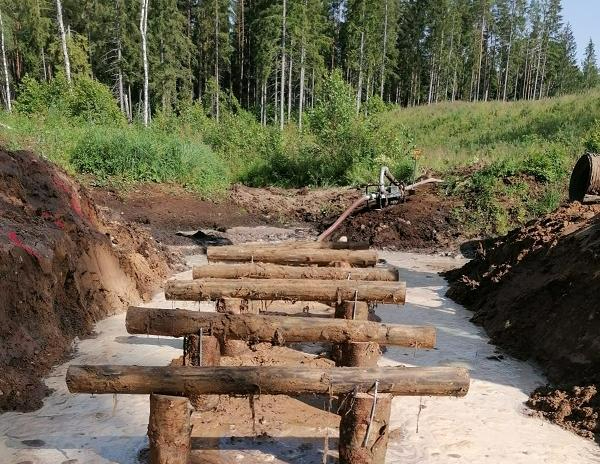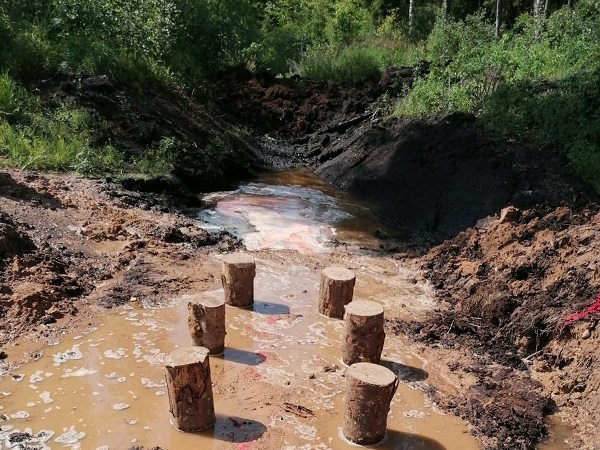A Wooden Structure Built on Piles has been Used to Stabilize a Culvert
To ensure the construction of an important culvert in peaty soil in the Île Dstrict of Zemgale Region, JSC “Latvia's State Forests” (LVM) employed a rarely used solution for the stabilization of the foundation of the culvert – a horizontal wooden structure built on driven piles called “wooden ladder”.
In the course of the construction works of the LVM Zemgale Region forest road “Ieviņu ceļs”, it was found that the main road culvert had settled in the ground by almost half a metre, thus significantly exceeding the deviation provided for in the specification for the LVM construction works, even though this place had already been preventively (during the design phase) assessed as having a weak bearing capacity. The culvert practically did not function due to settling in the ground; therefore, a decision was made to prepare design changes and dismantle both the culvert and the already built structure.
“To stabilize the foundation of the culvert, according to the new solution, 16 coniferous piles with a diameter of at least 20 cm and a length of 3.6 m were driven into the peaty soil, to create a “wooden ladder” on these piles. In the course of the construction, it was found that the data of the engineering geological survey were relatively accurate, and the piles could be driven into the peaty ground with the help of an excavator to a depth of 3 m. Now the works have been completed and monitoring is planned to observe the culvert to check whether the structure does not settle in again,” says Gatis Vīksna, LVM Senior Forest Infrastructure Specialist.
The construction works were carried out by SIA “Jaunie ceļi” based in the design developed by SIA “Varg Industries”.
In soils with low bearing capacity, the so-called “wooden ladder” is used to spread the self-weight of the embankment structure over a larger area unit and prevent the deformation of the culvert. The wooden structure is built for the horizontal road on the ground surface, then a culvert with the entire ground surface and road structure is built on this wooden structure. More frequently such solutions are used in the reconstruction or restoration of forest drainage systems, also in the construction of forest roads in complex, low-bearing soils.
Culverts are hydrological structures that ensure uninterrupted flow of water under roads and other engineering structures. If there are no culverts or they are installed incorrectly, water damages the engineering structure.




